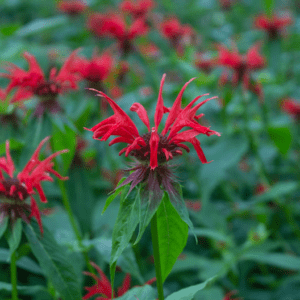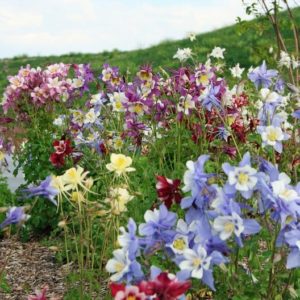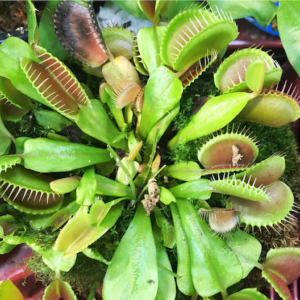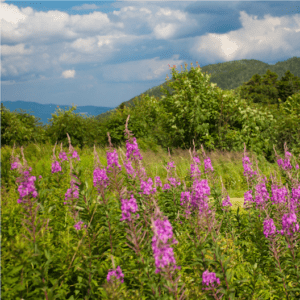As colder weather continues to spread across the country, gardeners are beginning to wrap up their fall growing seasons. While the winter months provide little gardening opportunities, they do provide an excellent opportunity to plan. In addition to planning and plotting out your springtime garden, why not also plan to hop in the car or on a plane, and travel to one of America’s best spots for wildflower growth. Not only will each of these locations provide ample photography opportunities, as well as take your breath away at the stunning views and vistas, but it can also help to inspire your plans for how to implement different varieties of wildflowers in your home garden, as well as around your home. Check out our list of the top Eastern United States destinations to view wildflowers in their natural state!
Best Wildflower Viewing Destinations in the Eastern US
Great Smoky Mountains
Tennessee & North Carolina
We may be a little biased towards the Great Smoky Mountains National Park, since it’s just a few hours to the west of our headquarters. But there is one thing that everyone can agree on, that the Smoky Mountains is home to the most stunning variety of wildflowers. In fact, within the boundaries of Great Smoky Mountains National Park, there are over 1,500 documented varieties of flowering plants, earning the park the nickname of the Wildflower National Park!

Beginning in mid-April, visitors can view such wildflowers as lady slipper orchids, violets, and dwarf irises. As the weather warms up, black-eyed Susans, bee-balms, and cardinal flowers begin to grace the landscape. When planning your trip, check out the Great Smoky Mountains Association’s website, where they provide Wildflower Reports between Spring and Fall that will detail what types of wildflowers can be found on each of the hiking trails. They ever offer historical records of the reports, just in case you’re hunting for an elusive breed of flower and want to ensure that it’s blooming during your visit!
Shenandoah National Park
Virginia
While Shenandoah National Park is best known for the 105-mile-long Skyline Drive, which winds along the crest of the Blue Ridge Mountains and provides stunning views around every bend, most visitors are completely unaware that, in the low-lying areas of the park, over 800 varieties of wildflowers can be found along hiking trails that crisscross throughout the park. Beginning in March, gardeners-turned-hikers can find wild geraniums, vibrant yellow and purple violets, and white bloodroot scattered throughout the vast fields. As summertime rolls into Shenandoah National Park, the foliage will unveil garden favorites like columbines, daisies, and touch-me-nots.

Dolly Sods
West Virginia
Located high in the mountains of West Virginia, inside the Monongahela National Forest, lies Dolly Sods. For the eastern portion of the United States, Dolly Sods offers an incredibly unique ecosystem, one that would more commonly be found in Canada. Its elevation atop the Allegheny Plateau, paired with lowland bogs and a vast variety of foliage makes it a site worth visiting for any wildflower lover. The area is best known for its abundant blooms of wild bleeding-hearts, rhododendrons, sunflowers, and flame azalea. In the summertime, the boggy areas take center stage, where visitors can stroll miles of raised boardwalks to view pink orchids, rose pogonias, and, if you look closely, round-leaved sundew, a carnivorous plant that feeds on unsuspecting insects flying around the cranberry bogs.

It’s important to note to would-be visitors to Dolly Sods, that the region was used as a training area during World War 2. The area that is now the National Forest was regularly shelled by artillery and mortars, leaving behind spent explosive shells. In 1997, a survey crew trained to find explosives located 15 shells, some of which were still live. While they were detonated on the spot, the park recommends remaining on marked paths and only used existing campsites.
White Mountain National Forest
New Hampshire & Maine
The most northern location on our list, the White Mountain National Forest is located in northern New Hampshire and Western Maine, about an hour drive from Portland, Maine, and a three-and-a-half-hour trip from the Boston area. The 750,000 acre federally managed forest is home to Mount Washington, the tallest peak in the Northeastern United States. The peak can be reached via the Mount Washington Cog Railway, or by car by driving the Mount Washington Auto Road. Once you’ve reached the peak and are ready to explore the lowlands in search of wildflowers, you’ll be thrilled to find a wide variety of goldenrods, lilies, red trillium, and colorful rhododendron. It’s recommended to visit the White Mountain National Forest in the summer months, as weather can be quite unpredictable in the area.

Be sure to remember that as a visitor to these wildflower habitats, you should always remain on the marked trails and never remove any of the flora as a souvenir or to attempt to propagate in your home garden. Many of the ecosystems that you may hike through in any of these areas have taken hundreds of years to establish what you see today, and even slight damage from footprints can leave a lasting effect on growth. If you come across a wildflower that you absolutely need for your home garden, the best thing you can do is capture a picture of it, then head over to our Wildflower Seed Mix section of the Eden Brothers website to find a seed kit that best matches your photos. If you’re not certain that we carry the exact type of wildflower you are looking for, feel free to reach out to our customer service department and we’ll do our best to guide you towards the right seeds! Happy wildflower hunting!